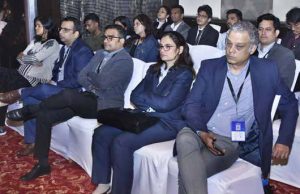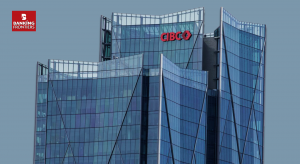CEOs and top leaders reveal perspectives about the future of insurance at InsureNext 2023. Edited excerpts:

Guests
Ankit Agrawal, Co-Founder & CEO, InsuranceDekho
Sachin Seth, MD & CEO, BSE-EBIX
Roopam Asthana, CEO & Wholetime Director, Liberty General Insurance
Monish Shah, Partner, Deloitte India
Manoj Agrawal, Group Editor, Banking Frontiers (Moderator)
Manoj Agrawal: Please share your opening remarks on the future of insurance.
Sachin Seth: I think, in India insurance is the industry which has gone through a huge amount of disruption, and a complete makeover. Penetration in India is pretty low. Though the growth is quite good in the last couple of years. So, the vision for 2025 for the industry is how we look at this 3D approach, which is disrupting the distribution of insurance through digital. So, basically as digital is the underlying layer of most of the disruptions which are happening globally. Although many innovations are happening in this area. But I think distribution is the area that I bet on and using digital to drive that off is something that I am looking forward to in the next 2 to 3 years.
Roopam Asthana: As I look ahead, I see the prospects of general insurance in India will be a smooth ride, although it’s not going to be a straight-up line. It will have its pulls and pressures. But if I talk about the challenges in front of us in the next few years, it’s going to be the Amar, Akbar and Anthony of our business. We call them AAA, which is awareness, and access as we talked about distribution and the third is affordability, which is the ability of the under penetrated and under insured which means affordable insurance. If we can solve this equation of AAA, we will be set for a fantastic time ahead.
 Monish Shah: According to me, we are in a very good state as good growth is happening. When we talk about penetration when we started the industry in 2001, it was just 2% which is now 4.2%. Why we are expecting good growth, now everyone is aware of the demographic dividend, now the very important thing is disposable income. What we have witnessed is that this generation of Indians is going to be the richest as it has ever been. That means when disposable income is going to rise, the financial services are going to rise proportionately high. So, we are going see multiple effect coming to the financial services and then to the insurance industry as well.
Monish Shah: According to me, we are in a very good state as good growth is happening. When we talk about penetration when we started the industry in 2001, it was just 2% which is now 4.2%. Why we are expecting good growth, now everyone is aware of the demographic dividend, now the very important thing is disposable income. What we have witnessed is that this generation of Indians is going to be the richest as it has ever been. That means when disposable income is going to rise, the financial services are going to rise proportionately high. So, we are going see multiple effect coming to the financial services and then to the insurance industry as well.
The last D, I will talk about is distribution. It’s not just about using customer friction but it’s about how can you leverage ecosystem play and how can you come up with embedded products.
Ankit Agrawal: As you talked about the three A’s, internally we call the three D’s of insurance, those are distribution, digitalization and diversification. I think India is the future. It is defining the way India looks at protection and savings. What we need to focus on is how we take insurance to the masses and make sure that somebody sitting in a remote village can buy the same protection as a person sitting in Delhi. How do we make sure the people who are distributing insurance can increase their income? As if we want to increase penetration, we need to incentivize the insurance agents to learn and sell more products.
We need to focus on digitization. How do we make sure that insurance can be bought with a scan of a QR code?
Manoj Agrawal: In your opinion, to what extent is personalization possible? How do you think personalization makes a difference?
Roopam Asthana: I think, basically trying to fit the product to the needs of the ultimate buyer. And this is probably the duty of all of us. If we don’t think this way, we can’t sell logically. There are three layers of personalization. The first one is asset-level personalization, the second one is at the individual level and the third level is at the servicing level.
Monish Shah: When we talk about hyper-personalization, one of the important things we consider in insurance is persona which means that each one of our 80 million customers is an individual. Today we have the data to see whether we are able to cater to 80 million customers and track their individual needs. I think the challenge is on the other side, i.e. the technology is available and the data models are given but most insurance companies haven’t been able to use them and build on them. This is the change we will see in the coming years in how data models are more agile, building insight on top of it and then acting on it.
Manoj Agrawal: Every industry faces this issue: Should they copy the global models and global practices, or should they create something home-grown, something that is more suitable for the requirement of the country? What do you feel is the better approach?
Ankit Agrawal: If we try to implement any global practices that may work well there but in our country, it is not going to work that way. We have seen that across many industries. We need to just understand the best global practices and localize them and then implement them here. As we have urban as well as rural India and we need to cater to both. We are also working for the changing India.
Roopam Asthana: We have seen many failures of global practices, procedures, and products which are just picked up and implemented here. We can’t afford those multibillions dollar kinds of investment, probably not. And therefore, we have to localize, Indianize, and economize the kind of practices that we are trying to implement here.
Sachin Seth: As they said some things do come but we need to implement them into the Indian format. Let’s take an example of McDonald’s in consumer products, although it is a foreign format, it is pretty successful in India. You can’t serve the same burger in Manhattan and Ghazipur, right? You need to take care of the local taste of that place.
Manoj Agrawal: Historically, there have been best global practices that India needs to adopt that was a standard formula. For a change, we are now talking of localize, personalize and a new management jargon itself that we are now facing.
Monish Shah: We need foreign capital, capital for developing the insurance industry, and investing in the fintechs. But I do believe that the supply of financial services will create its demand and we do need capital for that.
Manoj Agrawal: How do you see the preparation of India’s insurance sector to be able to serve these requirements?
Roopam Asthana: We have seen trillions invested in infrastructure which needs to be insured. We have some challenges here and I think the biggest challenge is the amount of capital available to the insurance business today. When we look at the solvency regime the way it’s defined today, for every additional business you need more capital. And these are the risks and that’s why we say we need an adequate amount of capital which is the first challenge. And then the other challenge is reinsurance. As these large projects are adequately re-insured. And there’s been a lot of input from reinsurers about how to manage these risks and how to price these risks.
Manoj Agrawal: What about skills and underlying technology needs that you do?
Roopam Asthana: That is the third thing. The challenge is being able to understand how the Indian conditions will impact the risks that will emerge from those projects.
Manoj Agrawal: How would a general insurance company prioritise between these opportunities and the 97% under-penetration opportunities?
Roopam Asthana: I think the type of insurance companies that we have today need to be adapted to serve a particular sector based on their specialization or preferences.
Ankit Agrawal: I’d say you really need to serve both. As if you want to create infrastructure, you need to have a solution for the under 97% uninsured. If you don’t do this, they won’t be able to use the infrastructure you are building. And skill can be acquired through training but we need to know how to manage the risks, which is more important.
Manoj Agrawal: Thank you so much for an insightful discussion.
__________
Read more-
‘Simplify’ yields top rank in customer satisfaction









